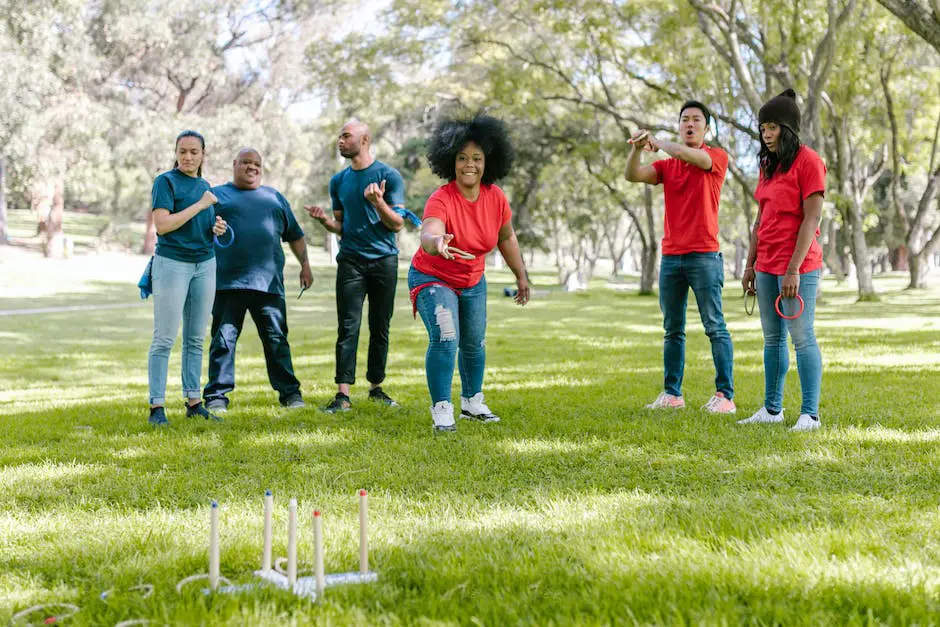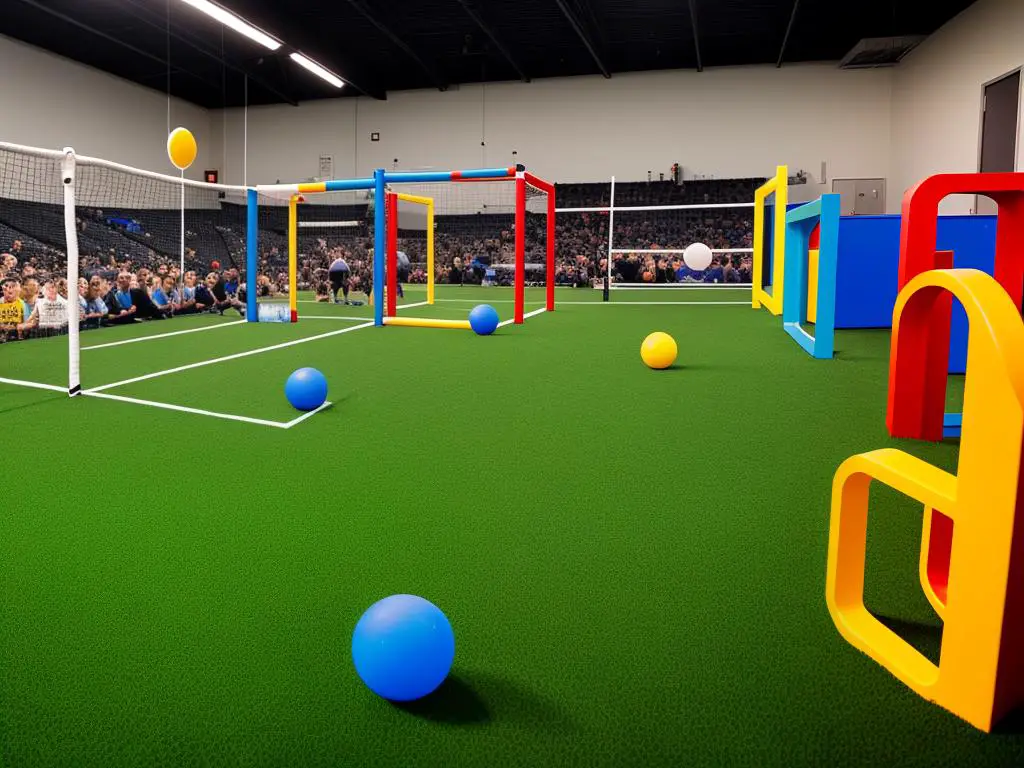Ring toss, a classic and enduring game, has captivated players with its apparent simplicity and underlying complexity for generations. It’s not merely the ease of throwing rings over pegs, but the integration of strategy, practice, and the understanding of its intricate rules that make this game uniquely compelling. A proper grasp of the scoring system, an adeptness in setting up the rings and posts, and a comprehensive knowledge of the correct distance when throwing are all crucial to mastering this game. Regardless of whether you’re playing for fun at a casual gathering or competing against seasoned players in a tournament, knowing the rules can make a vast difference.
Understanding the Rules of Ring Toss
Understanding The Game: An Introduction to Ring Toss
Ring Toss is a classic game that has stood the test of time, remaining popular due to its easy setup and wide appeal that stretches across different age groups. Despite its simplicity, it does incorporate a set of rules that players must follow for consistency and fairness. Here, we break down these guidelines, providing clarity on the scoring system, setup instructions, and the appropriate throwing distance.
Fundamentals: Setting Up the Game
Ring toss comes equipped with a board or platform featuring posts (also called pegs or stakes), and rings. The tallness of the posts will vary based on the set, ranging from a few inches to a foot or more in height. The numbers on or near the posts represent their point values. The posts are arrayed in different patterns, often in a straight line or a plus-shaped arrangement.
To set up the game, place the board or posts on a flat surface like grass, concrete, or sand. Arrange the posts at varying distances to create different challenge levels, with points increasing for farther away posts.
Gameplay Guidelines: The Correct Distance
The distance from which players should toss their rings varies based on age and skill level. For younger players or beginners, a distance of 3 to 5 feet from the posts may be fitting. For older players or those with more experience, a distance of 6 to 10 feet can add more challenge. The particular rules of the game you’re playing may provide exact distances.
Scoring System: How to Win Ring Toss
Points in ring toss are scored when a player’s ring lands around a post. The score assigned to that post is then added to their total score.
Generally, the farther a post is from the toss line, the higher its point value. For instance, a post closest to the ring toss line may be worth 1 point while the one at the farthest distance may be worth 5 points.
Variations: Tournament Rules
In a more official capacity such as tournaments, some variations of the rules exist. The toss line may be set at a specific distance from the posts (usually 10 feet for adults). The scoring system may also be streamlined, assigning each ringed post a fixed point value – often 1, 2 and 3 points based on the difficulty levels. The first player or team to reach a certain score, often 21 points, wins the game.
Being a game that emphasizes both skill and precision, ring toss is a great way to bolster hand-eye coordination and concentration. Whether it’s for a backyard fun day, a family reunion, a school picnic, or even a local tournament, understanding the rules of ring toss can ensure fair play and lots of fun.

Practising Tossing Techniques
Understanding Ring Toss Basics
Ring toss is a fun, versatile game that can be enjoyed by people of all ages. The objective of the game is simple: toss the rings onto the target pegs from a set distance away.
The fun lies in mastering the various toss techniques that can dramatically increase your accuracy. Each player might develop their own style which works best for them, but generally, there are two main types of tosses – the frisbee-like sideways toss and the straightforward overarm toss.
Preparing for the Toss
Firstly, it is essential to get a comfortable grip on the ring. This can vary depending on the technique used. For a frisbee-like sideways toss, place your thumb and forefinger around the edge of the ring. The rest of your fingers should naturally fall into place. While for an overarm toss, grip the ring similar to how you would hold a baseball, with all fingers spread around the ring.
Practising the Frisbee-Like Sideways Toss
The frisbee-like sideways toss is a popular technique due to its simplicity and effectiveness.
- Keep your feet shoulder-width apart and position yourself to face the target pegs.
- Pull your dominant arm back while keeping the wrist straight.
- Dispense the ring in a fluid, sweeping gesture, similar to throwing a frisbee.
- Practice releasing the ring at different points to determine the ideal release moment. The goal is to have the ring glide horizontally and land around the target peg.
Mastering the Straightforward Overarm Toss
The straightforward overarm toss requires a bit more precision but can be advantageous for targeting specific pegs.
- Stand with your dominant foot slightly forward and aim for the desired peg.
- Pull your dominant arm back, like preparing to throw a baseball.
- Toss the ring forward, extending your arm completely.
- Release the ring at the highest point of your swing, perfecting the release point can dramatically increase your accuracy.
- Aim to toss the ring in a way that it drops vertically onto the peg.
Key Tip: Practice Makes Perfect
Regardless of the technique you choose, repetition and practice are key to ring toss success. Gaining a better understanding of your throws and adjusting accordingly can result in greater accuracy and a better game. Remember, the ultimate goal of ring toss is fun, so don’t be discouraged if you’re not hitting the pegs right away. With patience, practice, and persistence, you’ll be a ring toss pro before you know it.

Playing ring toss goes beyond understanding the basic rules. It’s about nurturing your unique style and technique, by embracing the differences and harnessing skills. Whether you favor a frisbee-like sideways toss or a straightforward overarm toss, the success lies not just in the manner of throwing but also within the consistent practice of that specific method. The grip, the release, and the time spent practicing all work together to build a skilled ring toss player. Thus, to truly excel at ring toss, you need to foster not only the fundamental rules but also nurture your personal touch, transforming this simple amusement into a craft. Let the game begin!
Frequently Asked Questions about Mastering Ring Toss Game
A: Ring Toss is a classic outdoor game where players throw rings in an attempt to land them around a target, such as a peg or a bottle.
A: In Ring Toss, players take turns tossing rings from a specified distance towards the target. Points are awarded based on where the rings land.
A: Ring Toss can be played with 2 or more players, making it a versatile and social game for gatherings and events.
A: Yes, Ring Toss is a game that can be enjoyed by players of all ages, offering a simple yet entertaining outdoor activity.
A: To play Ring Toss, you need a set of rings and a target, which can be a peg, a bottle, or any similar object.
A: Absolutely! Ring Toss is perfect for backyard play, and it can also be enjoyed at parks, beaches, and other open spaces.
A: The duration of a game of Ring Toss can vary depending on the number of players and the agreed-upon points or rounds. On average, a game can last around 15 to 30 minutes.
A: Yes, mastering techniques like the flick toss and the underhand throw can improve accuracy and increase your chances of landing rings on the target.
A: Certainly! Players can introduce variations or house rules to add new challenges or customize the game to their liking.
